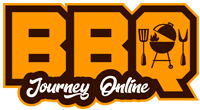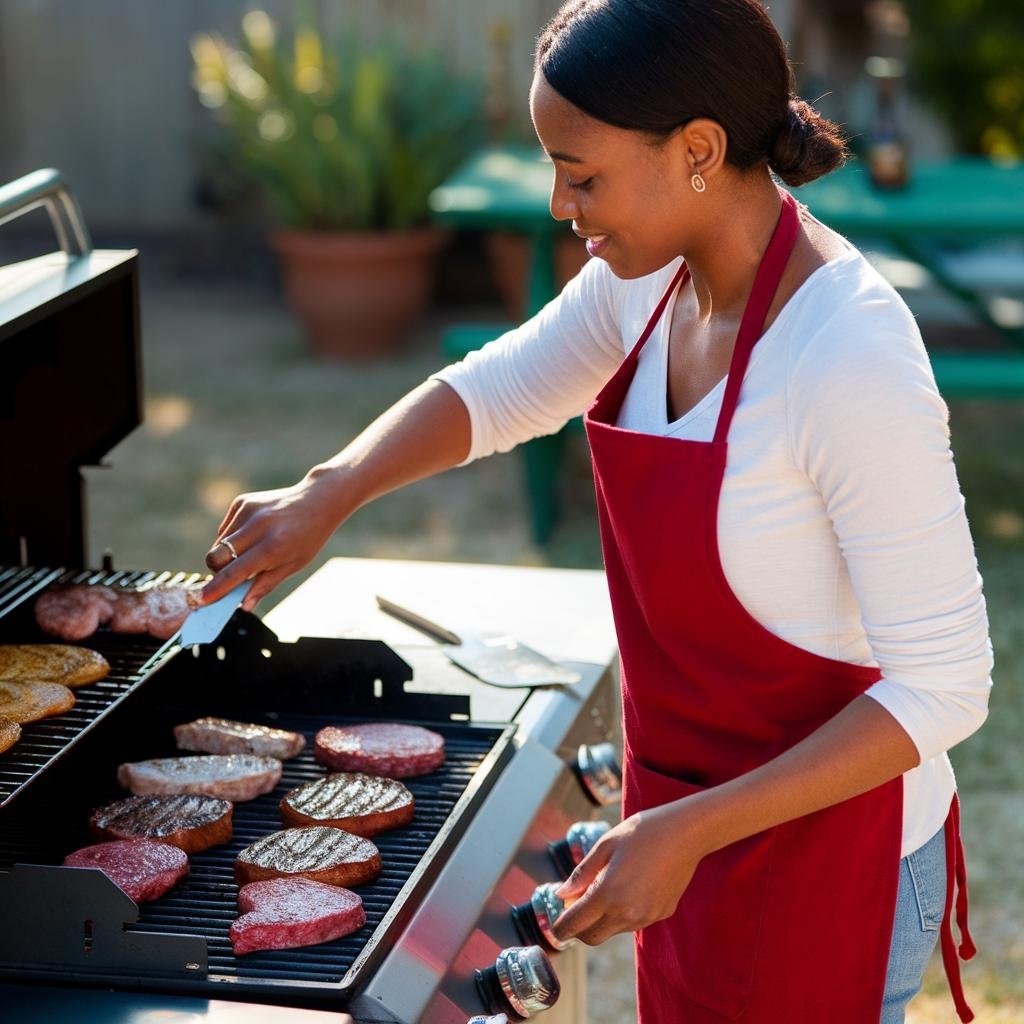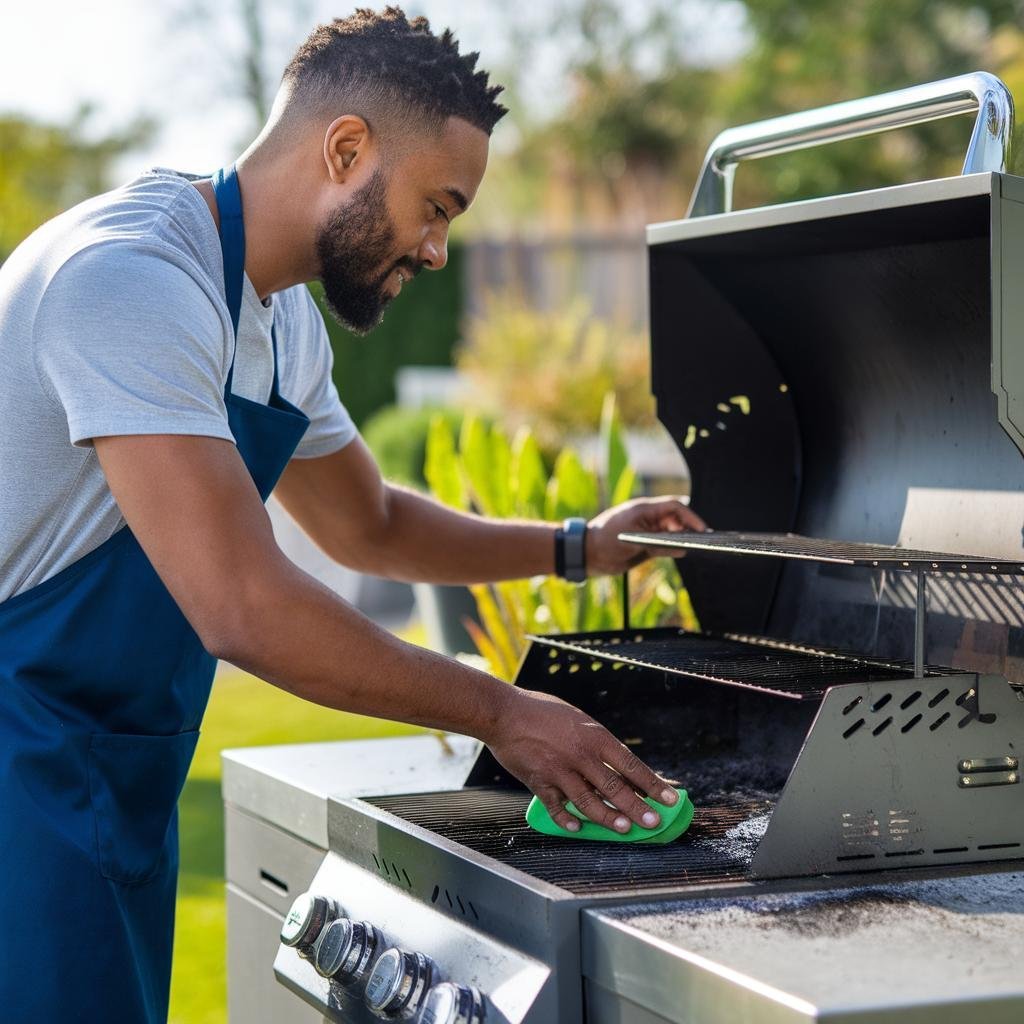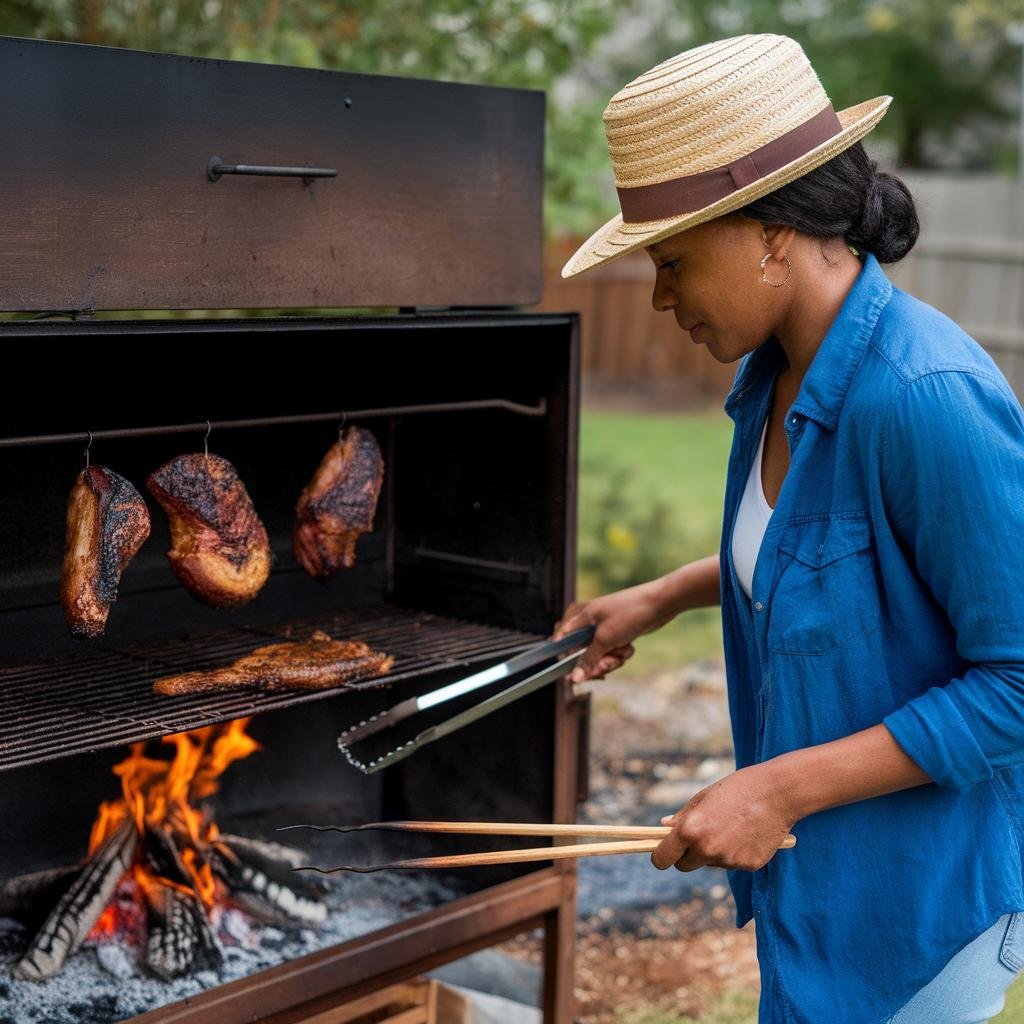Disclosure: This Post Contains Affiliate Links; We earn a commission on purchases.
If your gas grill is not heating properly or your outdoor stove is giving you trouble, there are a few common issues you can troubleshoot and fix yourself. By following these tips, you can ensure that your outdoor cooking equipment is in optimal working condition for a flawless BBQ experience.
When it comes to outdoor cooking, there’s nothing more frustrating than equipment issues getting in the way of a delicious meal. Whether you’re dealing with a gas grill that won’t light, a charcoal grill that won’t heat up, or a smoker that’s not smoking properly, this troubleshooting guide has got you covered.
In this article, we’ll walk you through the most common problems you might encounter with your outdoor cooking equipment and provide you with quick fixes and solutions. From gas grill issues to low flame and regulator problems, we’ll cover it all. Additionally, you’ll find maintenance tips to keep your equipment in top-notch condition and maximize its lifespan.
So, let’s dive in and get your outdoor cooking equipment back on track!
Key Takeaways:
- Common issues with outdoor cooking equipment can often be resolved through troubleshooting and simple fixes.
- Gas grill issues may include problems with lighting, uneven heat distribution, or hot spots.
- Low flame and regulator problems can lead to a decreased cooking performance and may require regulator reset or replacement.
- Troubleshooting stove issues involves checking for obstructions and ensuring proper airflow and gas flow.
- Regular maintenance, such as cleaning burners and inspecting parts, is essential to keep your outdoor cooking equipment in optimal condition.
Troubleshooting Gas Grill Issues
If your gas grill is not lighting or your charcoal grill is not heating up, there are a few potential issues to consider. Firstly, check the gas tank or fuel lines for any obstructions or leaks. Make sure the burners, venturi tubes, and control valves are clean and properly aligned.
If you have hot spots on your grill, it may be due to a blocked burner or clogged gas holes. Cleaning the burners and removing any debris can help restore even heat distribution.
To troubleshoot these issues with your gas grill, follow these steps:
- Inspect the gas tank and fuel lines for any obstructions or leaks.
- Clean the burners, venturi tubes, and control valves to ensure they are free from debris.
- Check for any blocked burners or clogged gas holes causing hot spots.
- Remove any blockages or clean the gas holes to restore even heat distribution.
By following these troubleshooting tips, you can ensure that your gas grill lights properly and your charcoal grill heats up evenly. Remember to perform regular maintenance to keep your outdoor cooking equipment in optimal working condition.
Fixing Low Flame and Regulator Issues
If you’re experiencing a low flame or problems with the gas regulator on your outdoor cooking appliances, don’t worry. These issues are common and can be easily resolved with a few troubleshooting steps. The gas regulator plays a crucial role in controlling the flow of gas from the propane tank to the burners, so it’s important to ensure it’s functioning properly.
To fix a low flame issue, follow these steps:
- First, disconnect the gas regulator from the propane tank.
- Next, inspect the regulator and connections for any visible damage or signs of wear.
- Reattach the regulator to the propane tank, ensuring a secure and tight connection.
- Mix a soapy solution of water and dish soap in a spray bottle.
- Spray the soapy solution onto the regulator connections and hoses.
- If you see any bubbles forming, it indicates a gas leak. In this case, tighten the connections or replace any damaged hoses.
- Perform a regulator reset by turning off all burners and closing the propane tank valve.
- Wait for a few minutes, then open the propane tank valve slowly.
- Light the burners and check if the flame has improved.
- If the low flame issue persists, you may need to replace the gas regulator.
By following these simple troubleshooting steps, you can fix low flame issues and ensure a steady and efficient gas flow to your outdoor cooking appliances.
Troubleshooting Stove Issues
If your outdoor stove or smoker is not functioning properly, there are a few potential issues to address. Check for any obstructions or blockages in the burners, venturi tubes, and control valves. Clean these components thoroughly to ensure proper airflow and gas flow. If your smoker is not smoking properly, it may be due to a clogged venturi tube or faulty wiring. Inspecting and cleaning these components can help resolve the issue.
“Proper maintenance of your outdoor stove is essential for optimal performance and delicious smoked meats.”
In addition to cleaning, regular maintenance and inspection of your outdoor stove or smoker can prevent issues and prolong its lifespan. Here are some essential maintenance tips:
- Check and replace any worn or damaged parts such as burners, ignition systems, and temperature probes.
- Inspect and clean the smoker box, ensuring that it is free from debris and ash buildup.
- Verify the proper functioning of the temperature control mechanism or thermostat.
By following these maintenance practices, you can ensure that your outdoor stove or smoker is always in top-notch condition, delivering the best flavors to your favorite BBQ recipes.
Common Issues and Solutions for Outdoor Stove and Smoker
| Issue | Cause | Solution |
|---|---|---|
| The stove does not ignite. | Weak or malfunctioning ignition system. | Check the ignition system for proper connection and replace if necessary. |
| Poor heat distribution. | Blocked or clogged burners or venturi tubes. | Clean the burners and venturi tubes to ensure proper gas flow and heat distribution. |
| Inconsistent temperature control. | Faulty thermostat or temperature control mechanism. | Inspect and replace the thermostat or temperature control mechanism as needed. |
| Insufficient smoke production. | Clogged or faulty venturi tube or wiring issues. | Inspect and clean the venturi tube or repair any faulty wiring to restore smoke production. |
Remember, regular maintenance, cleaning, and troubleshooting can go a long way in ensuring that your outdoor stove or smoker is always ready to deliver the perfect BBQ experience.
Maintaining and Repairing Outdoor Cooking Equipment
To keep your outdoor cooking equipment in optimal condition, regular maintenance and timely repairs are essential. By following these grill maintenance tips and fixing grill hot spots, you can ensure that your outdoor cooking experience remains top-notch.
Regular Cleaning
Cleaning the burners, venturi tubes, and control valves regularly will help prevent clogs and obstructions that can affect the performance of your grill. Use a grill brush or scraper to remove any grime or residue, ensuring proper gas flow and heat distribution.
Inspect and Replace Worn Parts
Over time, certain parts of your grill may become worn or damaged. It’s important to inspect these components and replace them as necessary to maintain optimal performance. Pay particular attention to the burners and the barrier/radiant, as these are critical for even heat distribution.
If you notice hot spots on your grill, it may indicate blocked burners or clogged gas holes. Cleaning the burners thoroughly and removing any debris can help restore even heat distribution across the cooking surface.
Check for Leaks
Another crucial aspect of grill maintenance is checking for leaks. Inspect the hoses, fuel lines, and regulators for any cracks or signs of wear. A leak can not only affect the performance of your grill but also pose a safety hazard. If you detect any leaks, replace the damaged parts immediately.
Performing Routine Maintenance
In addition to regular cleaning, there are other maintenance tasks that should be performed to keep your outdoor cooking equipment in tip-top shape. These include:
- Greasing the grill grates to prevent food from sticking and ensure even cooking.
- Checking and adjusting the ignition system to ensure reliable startup.
- Inspecting and cleaning the drip tray or pan to prevent grease buildup and potential flare-ups.
- Replacing the propane tank when it’s running low to avoid interruptions during cooking.
Key Maintenance Tasks for Outdoor Cooking Equipment
| Maintenance Task | Frequency |
|---|---|
| Clean burners, venturi tubes, and control valves | After every use |
| Inspect and replace worn parts (e.g., burners, barrier/radiant) | As needed |
| Check for leaks in hoses, fuel lines, and regulators | Every 3-6 months |
| Grease grill grates | Before every use |
| Check and adjust the ignition system | Every 3-6 months |
| Inspect and clean the drip tray or pan | After every use |
| Replace propane tank | As needed |
By following these grill maintenance tips and fixing grill hot spots regularly, you can ensure that your outdoor cooking equipment operates smoothly and efficiently, allowing you to enjoy delicious meals with family and friends for years to come.
Conclusion
Troubleshooting outdoor cooking equipment issues doesn’t have to be complicated or costly. By following these simple tips and performing regular maintenance, you can easily address common problems and keep your grill or stove in excellent working condition.
Whether you’re dealing with a low flame, regulator issues, or simply need to perform routine maintenance, taking care of your outdoor cooking equipment is crucial for a flawless BBQ experience.
Remember to clean the burners, venturi tubes, and control valves regularly to prevent any obstructions or clogs. Inspect and replace any worn or damaged parts, such as the burner or barrier/radiant. Check the hoses, fuel lines, and regulators for any cracks or leaks, as these can affect the performance of your equipment.
By following these troubleshooting tips and maintaining your outdoor cooking equipment, you can ensure that you’re always prepared for a successful BBQ gathering. So keep those grills firing and the food sizzling – happy outdoor cooking!
References

Ryan Conlon is a BBQ enthusiast and inspired chef on a journey through the smoky, savory world of outdoor cooking. Hailing from the heart of the Midwest, Ryan’s passion for grilling ignited during his early years, where family gatherings often revolved around the sizzle of the grill and the aroma of seasoned meats.







